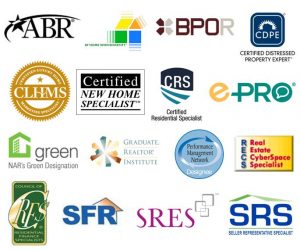 GREEN – Energy Saving Back to Basics: Simple Winterizing Strategies Deliver Big Benefits
GREEN – Energy Saving Back to Basics: Simple Winterizing Strategies Deliver Big Benefits
Published by: the National Association of REALTORS – GREEN REsource Council
Often it’s only with the first long snap of cold weather that people start thinking about doing some winterizing projects. Then they make a beeline to you with their how-to questions.
Some of the most routine problems – high energy costs and drafty houses–often have simple solutions. Here’s a trio of key projects that you can tick off to clients and some places they can go for help with those basics.
- Insulate: According to Energy Star, homeowners can save up to 20 percent on heating and cooling costs just by tightening up their homes’ outer wall, ceilings, windows, doors and floors. For instance, in houses with forced-air heating and cooling systems, often 20 percent of the air moving through ducts is lost because of leaks and leaking connections. Ducts that are visible and accessible can be repaired with duct sealant. Learn more about sealing ducts by viewing this video.
- Seal: If homeowners feel a breeze, it probably means they have some sealing job ahead of them. Here are some strategies.
- Use caulk or weather-stripping to seal window leaks. Here are two spots to find tips on keeping drafts out.
- Depending on the climate, close or open drapes on sunny sides of the house either to block or welcome the sun’s heat. Life doesn’t get simpler than that.
- Doors are another big offender when it comes to leaks. Find step-by-step instructions on plugging door drafts here.
- Heating and cooling: The HVAC system is a workhorse, particularly during the winter. Keep it humming and efficient by:
- Having the system checked and tuned up by a professional.
- Changing filters regularly. Dirty filters slow airflow and make the system work harder, leading to wasted energy and higher bills.
- Installing a programmable thermostat and turning down the heat at night and when the house or apartment is empty. According to Energy Star, the average household spends more than $2,200 a year on energy bills. Half of that cost goes to heating and cooling. But by using programmable thermostats properly, Energy Star says homeowners can save about $180 a year.
Homeowners in warm climates also can save energy by programming the thermostat to cool the house to 78 degrees. Florida Power and Light suggests raising the temperature to 82 degrees or warmer when people are away.
This Old House offers a video that illustrates how to install a programmable thermostat.
Other warm-climate fixes can save energy too. For example, Florida Power and Light suggests limiting the running time of pool pumps to six hours a day during summer and four hours a day during winter. And the U.S. Department of Energy suggested turning the temperature down or turning off the pool water heater if the pool won’t be used for several days. See this site for more pool-related energy saving tips.
Source: Green REsource Council Newsletter, Originally Published in: November 2011
For the Full Article, visit the NAR GREEN REsource website at: http://www.greenresourcecouncil.org/green-resources/green-industry-articles/energy-saving-back-basics-simple-winterizing-strategies
GREEN – Energy Saving Back to Basics: Simple Winterizing Strategies Deliver Big Benefits
Visit Christopher Tenggren’s Blog again soon at: http://HomesInTheFoxValley.com/blog
#HomesInTheFoxValley












Speak Your Mind
You must be logged in to post a comment.